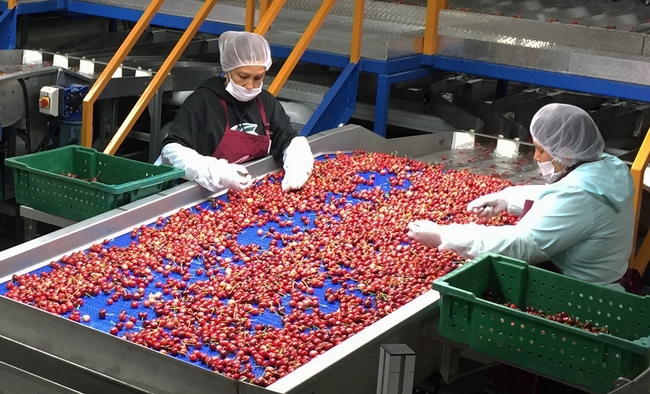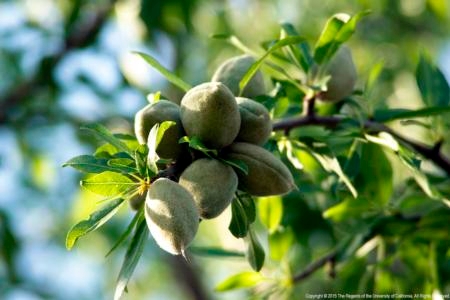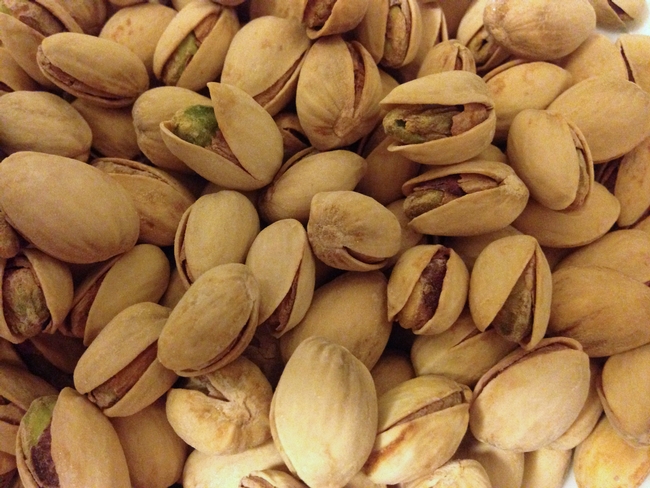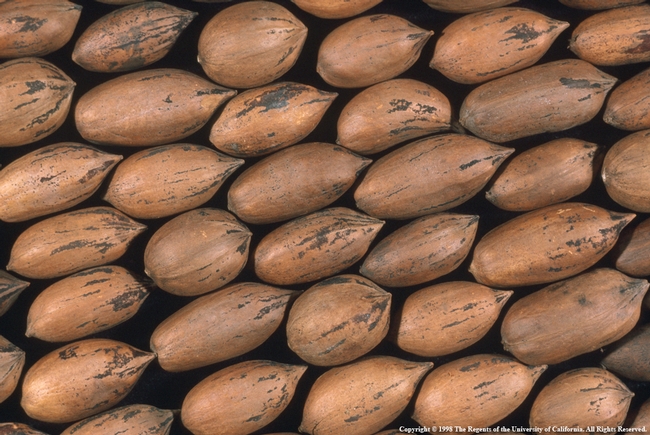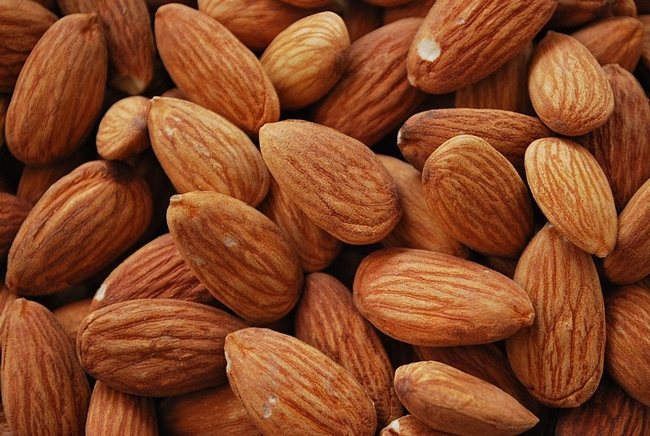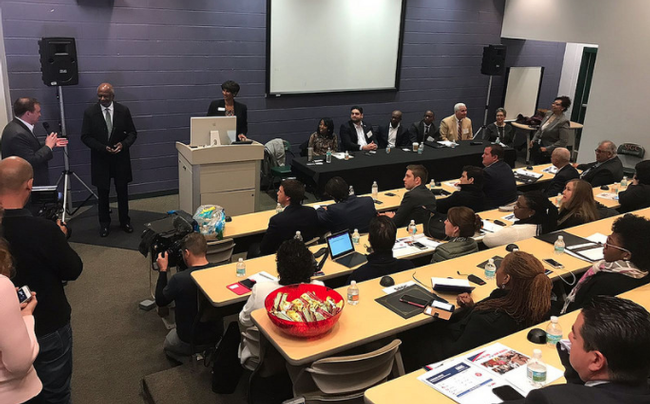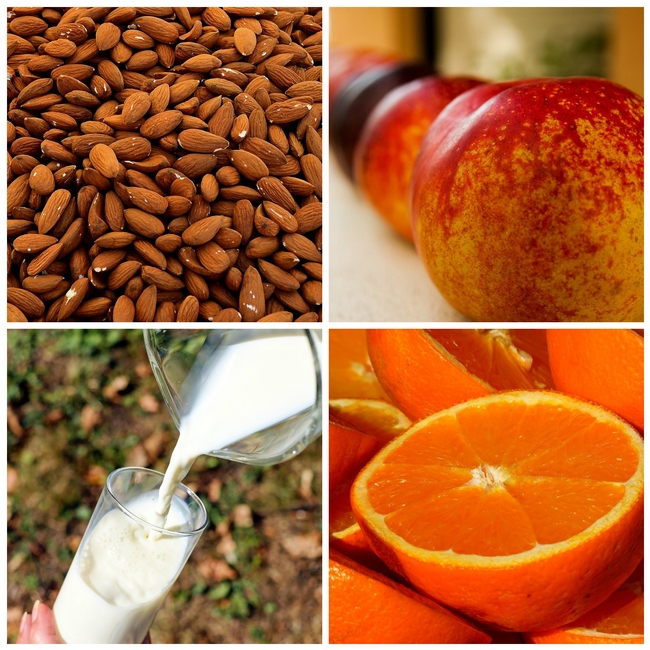Posts Tagged: Trade
New tariffs could cost U.S. nut and fruit industries over $3 billion
The ongoing international trade turmoil between the U.S. and other countries has prompted import tariffs on many U.S. agricultural commodities in important export markets, which could hurt U.S. farmers.
A new report released by the University of California Agriculture and Natural Resources' Agricultural Issues Center estimates the higher tariffs could cost major U.S. fruit and nut industries $2.64 billion per year in exports to countries imposing the higher tariffs, and as much as $3.34 billion by reducing prices in alternative markets.
“One way to mitigate the impact of the tariff impacts would be to offer assistance to shift the products to completely new markets where these displaced commodities could be delivered without causing price declines,” said co-author Daniel A. Sumner, director of the UC ANR Agricultural Issues Center and UC Davis professor in the Department of Agricultural and Resource Economics.
When nuts and fruits are diverted back into the remaining markets for their crops, Sumner and co-author Tristan M. Hanon, a UC Davis graduate student researcher, expect farmers to lose revenue from lower prices.
The agricultural economists foresee major losses for many commodities caused by diverting the produce from high tariff countries to sell in the remaining markets.
Almonds alone could lose about $1.58 billion and pistachios could lose about $384 million, according to Sumner and Hanon.
The authors looked at the impact of tariffs on almonds, pecans, pistachios, walnuts, apples, oranges, raisins, sour cherries, sweet cherries and table grapes. All 10 nuts and fruits are perennial crops, growing on trees or vines, so growers cannot easily change their production quantities or plant a different crop.
The U.S. exports 13 percent of its almonds, 14 percent of its pistachios and 22 percent of its pecans to countries imposing the new tariffs. China and Hong Kong are major export markets for U.S. fruits and nuts. In 2016 and 2017, China and Hong Kong spent over $500 million to buy 40 percent of all U.S. almond exports, and nearly $600 million for most of the exported pistachios. Some of the exports to Hong Kong are transshipped to other markets, but most of it stays in the China market.
The new tariffs apply to all ten crops that are exported to China. “We consider most of the exports to Hong Kong with China because we understand that most of the U.S. fruit and nut exports to Hong Kong are destined for China,” Sumner said.
To avoid paying tariffs, there are clues that Hong Kong's open market is the entry point for nuts ultimately shipped to China, in what Sumner calls “leakage.”
“The 7 million people in Hong Kong would have to eat 20 times the pistachios consumed by people in other countries if they aren't sending them on to China, the Philippines and other Asian countries,” Sumner said. “China turns its back on leakage, but those commodities may be vulnerable if China decides to crack down.”
After the Trump administration imposed tariffs on an additional $16 billion worth of Chinese goods, China announced duties on $16 billion of American goods. Another round of new tariffs has now been scheduled.
In India, Mexico and Turkey, new higher tariffs apply to selected fruit and nut products. India, which buys roughly half of all exported U.S. almonds, applies new tariffs to almonds, walnuts and apples. Turkey's new tariffs apply to almonds, pecans, pistachios and walnuts. Mexico's tariffs target apples, for which the country paid about $250 million last year.
U.S. Secretary of Agriculture Sonny Perdue announced up to $12 billion in federal aid to farmers to soften the impact of tariffs.
“The U.S. government could purchase the commodities that would have been exported,” Sumner said. “Of course, the produce must be diverted from remaining markets to new market channels to avoid driving down prices.”
The full report “Economic Impacts of Increased Tariffs that have Reduced Import Access for U.S. Fruit and Tree Nuts Exports to Important Markets,” along with details on data, sources and methods, can be downloaded for free at the UC Agricultural Issues Center website at http://aic.ucdavis.edu.
[This article was updated at 10 pm, Aug. 14, to update the dollar estimates in this sentence: "Almonds alone could lose about $1.58 billion and pistachios could lose about $384 million, according to Sumner and Hanon."]
July 2018 News Clips
California's Wildfires Are Spreading Faster and Burning More This Year. Experts Say It 'Can Only Get Worse'
(TIME) Jennifer Calfas, July 31
…Rising temperatures aren't the only reason fires have grown in size and aggression, though scientists are quick not to place blame entirely on climate change. Urban development in vulnerable areas can make fires more devastating, and many of the state's most destructive fires were started by humans including the Carr Fire. Max Moritz, a specialist in cooperative extension at the University of California's Division of Agriculture and Natural Resource, says hotter temperatures have made fire seasons longer, too. Scientists see a direct link between rising temperatures and the amount of dry brush and ample fuel, which makes the fires fast-moving and often more explosive.
“There's good, solid research linking temperature increases to trends in fire activity,” says Moritz. “But it's really long-term trends.”
http://time.com/5353986/california-wildfire-2018-season/
Alfalfa & forage research grants awarded
(Morning Ag Clips) July 31
The California Alfalfa and Forage Research Foundation (Foundation), formed in 2015, is pleased to announce that it has awarded its first round of research grants….
Selected projects:
EVALUATION OF WEED MANAGEMENT IN CONVENTIONAL SEEDLING ALFALFA
submitted by Mariano Galla, UCCE Agronomy & Weed Science, Butte and Tehama Counties
EVALUATION OF WEED MANAGEMENT IN ESTABLISHED ALFALFA
submitted by Thomas Getts, UCCE Weed Ecology and Cropping Systems Advisor – Lassen, Modoc, Plumas and Sierra Counties
REDUCING WEED PRESSURE DURING STAND ESTABLISHMENT USING PRE-PLANT WEED GERMINATION FOLLOWED BY MECHANICAL OR CHEMICAL CONTROL
submitted by Sarah Light, UCCE Agronomy Advisor, Sutter, Yuba and Colusa Counties
https://www.morningagclips.com/alfalfa-forage-research-grants-awarded/
Agricultural practices showcased at IREC Field Day in Tulelake
(Siskiyou Daily) Danielle Jester, July 30
An inside look at agricultural research being done at the Intermountain Research and Extension Center in Tulelake was given to those who attended the IREC's Annual Field Day on July 26.
Firefighters Are Focused on Flames, Not Climate Change
(Scientific American) Kelsey Brugger, July 30
Climate change has exacerbated wildfires throughout America, and it's testing the people who fight them.
…Scientists are careful not to attribute any one wildfire to global warming, “but it sure looks like climate change,” said Max Moritz, a wildfire specialist in the Environmental Science, Policy, & Management Department at the University of California, Berkeley.
https://www.scientificamerican.com/article/firefighters-are-focused-on-flames-not-climate-change/
How California copes with Asian citrus psyllids
(Capital Press) Padma Nagappan, July 27
Huanglongbing, also known as citrus greening disease, has devastated the Florida citrus industry, and researchers and growers are working to prevent its spread to California's commercial groves.
…The disease is still confined to residential trees, but is spreading throughout Southern California — in Orange, Los Angeles and Riverside counties.
“That picture could easily change this fall, there's a lag time from when trees are infected and when we can tell that they're infected,” said Elizabeth Grafton Cardwell, an entomologist at the University of California-Riverside and the director of the San Joaquin Valley research center.
http://www.capitalpress.com/Orchards/20180725/how-california-copes-with-asian-citrus-psyllids
Portugal, the government is relying on an ancient firefighting technology: goats
(Christian Science Monitor) July 26
Portugal, the government is relying on an ancient firefighting technology: goats.
Last year deaths from wildfires in Portugal reached a record high of 106. This summer, however, hundreds of goats are being deployed to eat underbrush and dry vegetation that can serve as kindling. Working with goats “allows you to treat areas that are difficult to reach otherwise,” Dan Macon, a University of California Cooperative Extension livestock and natural resources adviser, told accuweather.com.
Phylloxera can also appear on own-rooted vines
(Western Farm Press) Tim Hearden, July 25
A University of California Cooperative Extension farm advisor cautions that even own-rooted vines can be susceptible to grape phylloxera, a tiny aphid-like insect that feeds on roots.
Lynn Wunderlich, a UCCE advisor based at Placerville, says some growers in her area are taken aback by the discovery of phylloxera in their own-rooted vines that are declining. The insect is thought to feed on certain rootstocks, stunting growth of vines or killing them, but it also can affect vines that are not grafted onto rootstock.
https://www.westernfarmpress.com/grapes/phylloxera-can-also-appear-own-rooted-vines
Minimize dust in vineyards for effective weed control
(Western Farm Press) Tim Hearden, July 25
In the hot summer months, activities in vineyards — as well as orchards and other farm fields — can kick up a lot of dust. And aside from causing soil erosion, tissue damage, reduced photosynthesis, and other troubles, wind-blown dust can complicate weed control, a University of California Cooperative Extension advisor says.
That's because dust can reduce the efficacy of glyphosate, which is an important tool for the management of weeds in vines and elsewhere, according to Lynn Sosnoskie, agronomy and weed science advisor based at Merced.
https://www.westernfarmpress.com/grapes/minimize-dust-vineyards-effective-weed-control
Family of mountain lions visits research center in Hopland Monday
(KRCR) Marissa Papanek, July 24
According to the Hopland Research and Extension Center, a family of mountain lions were captured on camera strolling down a Hopland trail Monday.
HREC said via Facebook that it uses trail cameras to understand local wildlife populations and their movement and behavior. Those cameras caught some of the area's largest inhabitants Monday, including adult and young mountain lions.
USDA Awards UC and Karuk Tribe $1.2 Million for Research and Education
(Native America Today) July 24
...Jennifer Sowerwine, UC Cooperative Extension specialist at UC Berkeley and co-founder of the Karuk-UC Berkeley Collaborative, and Lisa Hillman, program manager of the Karuk Tribe's Píkyav Field Institute, will co-lead the xúus nu'éethti – we are caring for it research project.
https://www.nativeamericatoday.com/breaking-news-4
UC advisor Blake Sanden retires after decades of research in almonds and pistachios
(Ceres Imaging) July 24
Blake Sanden, a University of California advisor for almond and pistachio growers since the 1990s, officially retired as of June (for more on Blake's career achievements, see this blog on the UC site).
Could Coffee Be California's Next Cash Crop?
(San Francisco Magazine) Luke Tsai, July 24
The story of California's coffee experiment begins with Jay Ruskey...
In the many online videos you can find of Ruskey, who is 45 years old, he's charismatic and good-looking, with floppy hair, a toothy grin, and a distant resemblance to the actor John Krasinski. He isn't the first person to try to grow coffee in California, but he is the first to preach the gospel convincingly and to make a serious attempt on a commercial scale. It's an effort that stretches back more than 15 years, to when Mark Gaskell, a small-farm adviser with the UC Cooperative Extension program, handed Ruskey nearly 40 Central American coffee plants and helped him figure out how to get them to grow.
https://modernluxury.com/san-francisco/story/could-coffee-be-californias-next-cash-crop
Karuk cultural food and plants to be studied
(Siskiyou Daily News) July 20
The USDA recently awarded a $1.2 million Agriculture and Food Research Initiative grant to UC Berkeley and the Karuk Tribe to increase resilience of cultural food and other plant resources.
According to a press release from UC California's Division of Agriculture and Natural Resources, the university and the Karuk Tribe will “learn more about stewarding native food plants in fluctuating environmental conditions.” All project activities will take place in the Karuk Tribe's Aboriginal Territory in the mid Klamath River Basin.
http://www.siskiyoudaily.com/news/20180720/karuk-cultural-food-and-plants-to-be-studied
High-speed Wi-Fi at ag research center may be blueprint for rural communities
(RCR Wireless News) Susan Rambo, July 20
Outside the small San Joaquin Valley town of Parlier, 20 miles south of Fresno, California, the University of California's Kearney Agricultural Research and Education Center looms over farmland. Much more impressive in person than on Google street view, the center looks like a mini university campus — which is how KARE describes itself. Researchers have studied agriculture in this location since 1965, when local farmers pitched in to buy the land and donate it to the University of California Agriculture and Natural Resources (UC ANR). KARE is one of nine research and extension centers (RECs) under the umbrella of UC ANR around the state, one of which is nearby Lindcove (LREC).
… “I've been in Africa recently and the mobile coverage there was better,” said Dr. Jeffery A. Dahlberg, director of KARE, referring to some rural areas around the center. “It's embarrassing,” he said, given the relative wealth of United States.
Working Landscapes
(KCAA Water Zone) Inge Bisconer, July 19
Glenda Humiston was interviewed on ecosystem services on working landscapes. Humiston is introduced at 12-minute mark, followed by audio tech difficulties. At 16 minutes, Humiston begins talking about the Elevate Rural California project's efforts to encourage biomass development, broadband connectivity and water infrastructure to create more business and jobs opportunities. One activity that Stephanie Larson, UC Cooperative Extension director in Sonoma County, is working on is building markets for ecosystem services such as groundwater recharge, oxygen produced by plants, flood protection, wildlife habitat and open space.
Humiston also encouraged listeners to participate in the California Economic Summit being held in Santa Rosa on Nov. 15-16. She noted that summit participants look for triple bottomline solutions and get things done.
http://podcasts.kcaastreaming.com/water/
This year's almond spurs produce next year's crop
(Ag Alert) Dennis Pollock, July 19
You may not readily see it, but healthy spurs on this year's almond trees set the table for optimizing yields next year. And it could be a mistake to weigh in with a heavy hand when it comes to pruning trees.
Elizabeth Fichtner, University of California Cooperative Extension farm adviser in Tulare County, and Bruce Lampinen, UC walnut specialist with UC Davis, addressed those topics at a Central California Almond Day event in Fresno.
“All buds in the current year were formed the prior summer,” Fichtner said.
http://www.dailydemocrat.com/business/20180719/this-years-almond-spurs-produce-next-years-crop
Extreme heat in the garden: How to keep plants healthy with water, shade and mulch
(LA Daily News) Sandra Barrera, July 19
“In Southern California, Sunset zones are preferred over USDA zones due to their greater accuracy,” said Janet Hartin, an environmental horticulture advisor for the University of California Cooperative Extension in San Bernardino, Riverside and L.A. counties.
Wireless smart farming to keep frost away from citrus
(RCR Wireless News) Susan Rambo, July 17
Computer science researchers from the University of California Santa Barbara are using the internet of things to prove that smart farming can be a farm implement as basic as the tractor and plough.
…Dr. Beth Grafton-Cardwell, research entomologist, an integrated pest management (IPM) specialist and Lindcove's director remembers sorting fruit by hand.
What is meat, anyway? Lab-grown food sets off a debate
(Wired) Matt Simon, July 16
…There could also be a middle ground here: marketing the new product as meat, but qualifying that designation. So “cultured meat,” or “lab-grown meat”—people have even thrown around “cell-based meat” (though technically speaking, all meat is cell-based). You can't, after all, just call your soy milk plain old milk. “Almond milk is obviously not the lactate of a mammary gland,” says animal geneticist Alison Van Eenennaam of UC Davis. “So I think probably there's going to have to be some other distinguisher so it's not mislabeled, because the FDA rules on labeling is it can't be false or misleading.And if it's labeled ‘meat,' you could make an argument that that's misleading.”
https://www.wired.com/story/what-is-meat-anyway
Parasite-borne illness spurs McDonald's to pull salads from 3,000 restaurants
(Los Angeles Times) Geoffrey Mohan, July 13
…“We are seeing more of these outbreaks popping up,” said Erin DiCaprio, a cooperative extension assistant specialist at the UC Davis' Department of Food Science and Technology.
The parasites are specific to humans and tend to spread through poorly processed sewage that may find its way into irrigation sources, DiCaprio said. “It's usually associated with produce that's from outside the United States,” she said.
There is no routine testing for presence of the parasite in the U.S. produce industry, in part because it has been difficult to develop a test in the laboratory, DiCaprio said. Many physicians also overlook testing ill patients for the parasite, according to the CDC.
http://www.latimes.com/business/la-fi-mcdonalds-salads-20180713-story.html
Is It Safe to Eat Local Produce After a Wildfire?
(Pacific Standard) Sophie Yeo, July 13
…But the story could be different for another popular product of small-scale farming: eggs. Another study being undertaken by scientists at the University of California–Davis is examining how the ash distributed by the fires could have affected poultry and the eggs they produce. This group, too, has just received its first batch of data.
"Chickens are unique in that they spend 25 percent of their waking time eating off the ground. It's a worst-case scenario, where they really are products of the environment because they spend so much time ingesting it. Eggs are particularly worrisome because yolks are very fatty, and a lot of these chemicals are very fat soluble," says Maurice Pitesky, a veterinarian and epidemiologist working on the study. "It's a bit of a different risk factor from some produce. I would be very surprised if we didn't find something."
https://psmag.com/environment/is-it-safe-to-eat-local-produce-after-a-wildfire
California Today: Here's What's Been Different About Fires This Year
(New York Times) Thomas Fuller, Matt Stevens, July 13
…Firefighters for decades were accustomed to seeing fires slow down considerably at night, said Scott L. Stephens, a professor of fire science at the University of California, Berkeley. But a number of recent fires have continued to advance rapidly through the night.
“Many times now in the evening fires are burning at night almost as active as they are in the day,” Professor Stephens said. “Things are happening here in California that 10 years ago I never heard about.”
https://www.nytimes.com/2018/07/13/us/california-today-wildfires-emmys.html
Firewise: Wildfire Preparedness Goes Beyond Horse Evacuation
(Paulick Report) Denise Steffanus, July 11
Dr. Kate Wilkin, forest and fire adviser for the University of California Cooperative Extension, said farm owners can take advantage of equine grazing habits — eating grass down to the nub — to protect the safety zone.
“Having heavy grazing around your structures and then feathering it out as you go farther away from the structures is one way to protect the property,” she said. “Of course, you want to be careful not to destroy that forage by overgrazing that will cause erosion.”
SAD story: Sugar disorder causes mid-season grape shrivel
(Western Farm Press) Tim Hearden, July 11
Among the most common headaches that grape growers encounter as their crop is developing is sugar accumulation disorder, or SAD, say University of California advisors.
Field studies involving E & J Gallo Winery and UC researchers have been under way near Clarksburg, Calif., to find solutions for SAD, which causes poor berry coloration and low sugar accumulation. It is triggered after veraison, according to Chuck Ingels of the UC Cooperative Extension in Sacramento County.
http://www.westernfarmpress.com/grapes/sad-story-sugar-disorder-causes-mid-season-grape-shrivel
Amid trade turmoil, olive industry eyes U.S. market
(Western Farm Press) Tim Hearden, July 11
…As the state's tree nut sectors are advocating vociferously for a resolution to the budding trade war with China, the European Union and other countries, one crop that is largely unscathed by all the turmoil is olives.
That's because unlike most Golden State commodities, olive exports are minimal while import competition is robust, University of California-Davis agricultural economist Daniel Sumner notes.
“Olives are in a different situation,” Sumner said during a recent grower meeting in Orland, Calif. “The big difference for olives is they're not an export crop for the United States.”
http://www.westernfarmpress.com/orchard-crops/amid-trade-turmoil-olive-industry-eyes-us-market
Effects of China's tariffs on California agriculture
(KPFA) UpFront, July 9
Beginning at the 50:00 mark, Daniel Sumner discusses the effects of China's tariffs on California agriculture.
It doesn't need to escalate to take a hit. You have the direct hits of what's happening now, you also have the threat of future things happening. As you know, business including agriculture operates on expectations. I would say the biggest thing listeners should keep in mind is that as much as we focus on the announcement of the day, the announcement of tariffs on Chinese goods and the Chinese long-planned retaliation, those lists were put together months ago. Businesses were hoping it wouldn't happen, but planning for that.
https://kpfa.org/player/?audio=289782
7 Smart Irrigation Watering Tips
(My Motherlode) Rebecca Miller-Cripps, UCCE Master Gardener
We have been lucky, in terms of water, in Tuolumne County in 2018. Late snow and rain in March and April helped offset a dry early winter and temperatures have remained fairly mild so far this summer.
…Celebrate “Smart Irrigation Month” by using some of the watering tips from the University of California Integrated Pest Management program,http://ipm.ucanr.edu/TOOLS/TURF/ …
https://www.mymotherlode.com/news/local/375518/7-smart-irrigation-watering-tips.html
The Spoon @ FOOD IT: Gabe Youtsey of UCANR, July 7
The Spoon partnered with the Mixing Bowl to interview some of the thought leaders at the FOOD IT event. This interview is with Gabe Youtsey, Chief Innovation Officer of the University of California, Agriculture and Natural Resources (UCANR).
https://vimeo.com/album/5290019/video/278781519
Central Valley farmers brace for fallout from tariffs
(Bakersfield Californian) John Cox, July 7
Dan Sumner, an agricultural economist at UC Davis, sees trouble on many fronts. Whenever farmers install vineyard trellises or irrigation piping, he said, they're being hit by price increases resulting from new U.S. tariffs on imported steel.
5 reasons California jobs are vulnerable to the China tariffs
(ABC 10) Eric Escalante, July 6
…In contrast, UC Davis Agricultural and Resource Economics Professor Daniel Sumner reasons that most jobs in farming are low wage and many others are seasonal.
“Farm employment may fall slightly, but the crops are in the ground and being harvested so for this year labor impacts are smaller,” said Sumner in an email. “The longer it lasts it will begin to have significant impacts as economic growth is reduced. But farm employment effects overall will be moderate at most.”
Five UC Cooperative Extension advisors retired on June 28
(Fruit Growers News) July 4
At the end of June, the distinguished careers of five UC Cooperative Extension advisors concluded when they retired. The new retirees are:
Mark Gaskell, UCCE small farms advisor for San Luis Obispo and Santa Barbara county
Gene Miyao, UCCE vegetable crops advisor for Yolo, Solano and Sacramento counties
Kim Rodrigues, director of the Hopland Research & Extension Center and UCCE forest advisor
Black Sanden, UCCE irrigation, soils and agronomy advisor in Kern County
Steve Tjosvold, UCCE horticulture advisor for Santa Cruz and Monterey counties
https://fruitgrowersnews.com/news/five-uc-cooperative-extension-advisors-retired-on-june-28/
Pruning wounds can lead to cankers, UC specialist warns
(Western Farm Press) Dennis Pollock, July 3
To paraphrase Shakespeare, almond pruning can be the unkindest cuts of all. They can open the way to a range of almond canker damage, says Florent Trouillas, assistant University of California Cooperative Extension specialist at the Kearney Agricultural Research and Extension Center.
http://www.westernfarmpress.com/tree-nuts/pruning-wounds-can-lead-cankers-uc-specialist-warns
Wildfires are burning across the country—here's how to prepare
(Popular Science) Mary Beth Griggs, July 3
…“Know that under conditions of mandatory evacuation, you will encounter traffic, frightening conditions, highly limited visibility due to smoke, etc., so being ready and leaving early is really important,” says Sabrina Drill, the Natural Resources Advisor for UC Cooperative Extension in Los Angeles and Ventura Counties. Cooperative extensions are a great place to get local information about how to prepare for wildfires in your particular area of the country.
https://www.popsci.com/wildfire-what-to-do
Five things you probably never knew about California's wildfires
(Mercury News) Patrick May, July 3
…Travis Bean writes in UC Weed Science blog that despite all the news coverage of last year's wildfires, “almost no source has identified the actual fuels involved for this most recent fire season or any other. As a weed scientist, this is a particularly alarming omission, especially when it's highly likely that invasive plants may have been partially responsible for exacerbating the intensity and spatial scale of many, if not most, of 2017's fires.”
Farmers concerned about potential new tariffs
China has threatened to impose retaliatory tariffs on American exports following President Trump's plan to impose tariffs on steel and aluminum imports. Agricultural exports are in the crosshairs, reported Thaddeus Miller in the Merced Sun-Star.
China's tariffs would first hit U.S. products such as avocados and nuts with 15 percent duties, the article says.
"It doesn't really matter which one it is, whether it's alfalfa, almonds or wherever it may go," said David Doll, UC Cooperative Extension advisor in Merced County. "They're as much political as they are anything else."
The potential tariff would have a significant impact on Merced County, where almonds are the second largest commodity valued at $578.5 million in 2016.
The back and forth trade disputes happening between the U.S. and China make trade less predictable and could lead to disruptions that impact California food and wine producers, even before potential Chinese tariffs go into effect, said Dan Sumner, director of UC Agriculture and Natural Resources' Agricultural Issues Center in an interview with Julia Mitric of Capital Public Radio.
If China hits the U.S. with a 15 percent tariff on wine, that's a problem, Sumner said.
"We may think California wine is special, but not everybody does,” Sumner said. "And if it's 15 percent more expensive than it used to be because of the tariff, there'll be a substantial reduction in how much gets sold in China."
Sumner said the proposed tariffs would likely hurt California's tree nut growers more than its wine producers because a larger proportion of almonds and pistachios are exported.
In 2016, the value of pistachios sold to China was $530 million, more than three times the value of wine exports to that country, Mitric reported.
UC ANR to host exchange in Northern California promoting business partnerships across the Americas
The tenth Americas Competitiveness Exchange on Innovation and Entrepreneurship (ACE) will be held for the first time in Northern California in October. To promote partnerships, the exchange will bring economic and political leaders from across the Americas and beyond to visit Northern California's world-class innovation and entrepreneurship ecosystems, and to experience the best California has to offer in food, wine and local products. The milestone “ACE 10” is sponsored by the University of California Agriculture and Natural Resources, Central Valley AgPlus and other California partners.
From Oct. 21 to 27, approximately 50 high-level economic and political leaders from across the Americas, selected through a competitive application process, will participate in ACE 10, which will highlight innovation and entrepreneurial activity.
ACE 10 program themes include:
o Improving health: Bioscience, food safety, healthy food access and nutrition
o Feeding the world: Sustainable food systems & communities, food security, ag tech
o Maximizing resources: Resource management, water and energy, waste-to-energy uses
o Fostering resiliency: Environmental sciences, mobility, global leadership
o Innovation ecosystems: Innovation communities, supporting entrepreneurs, financing ventures
“The University of California is pleased to host the milestone ACE 10 in Northern California to highlight our world-class innovation and entrepreneurship that drives local and regional economic development,” said Glenda Humiston, UC vice president of agriculture and natural resources. “We look forward to building new and lasting partnerships across the Americas.”
The ACE 10 program will start in San Francisco at UCSF's renowned biotech research center and start-up incubator in Mission Bay, followed by a visit to NASA Ames Research Center. The tour includes stops in Santa Cruz, Monterey, Salinas, Fresno, and Davis, and will conclude in Sacramento. Site visits will focus on food and agriculture, water and energy technologies, life and environmental sciences and advances in manufacturing.
“It's a tremendous honor and important opportunity for Northern California to host the 10th Americas Competiveness Exchange,” said Valley Vision's chief executive Bill Mueller. “Hosting this global delegation gives California not just the chance to showcase our assets, but also provides an unmatched platform to build global economic and research alliances.”
Gabriel Youtsey, UC ANR chief innovation officer agrees. “Innovation and entrepreneurship are California's biggest ‘exports' to the world and we aim to set off the next wave of innovation in our state's distinct areas of strength: food, agriculture and life sciences.”
The agenda is designed to provide the delegates opportunities for interactive learning, sharing of best practices, networking and partnership development as they travel from the coast to the inland areas of the state. “During the tours, our visitors will discover opportunities and create new collaborations that will continue to flourish long after they return to their home countries,” Humiston said.
ACE toured the Arizona-Southern California corridor in 2016. The most recent exchange, ACE 8, was held in Florida in December 2017. ACE 9 will be held in Israel and Germany this June where the baton will be passed to Humiston to take lead on ACE 10.
Valley Vision—a civic leadership organization headquartered in Sacramento that is committed to building a prosperous and sustainable future—is a co-host for ACE 10, along with UC ANR. The Northern California leadership team also includes California State University, Fresno and California State University, Chico; the cities of Davis, Fresno, Sacramento, Salinas, San Francisco and Santa Cruz; Bay Area Metro and Monterey County. The successful bid to host ACE 10 is an outgrowth of the Central Valley AgPlus food and beverage manufacturing consortium.
The principal ACE convening institutions are the U.S. Department of Commerce, through the International Trade Administration (ITA) and the Economic Development Administration (EDA); the U.S. Department of State; the Government of Argentina;and the Organization of American States (OAS) as the Technical Secretariat for the Inter-American Competitiveness Network (RIAC). ACE is a core component of the Work Plan of the Inter-American Competitiveness Network.
Past examples of mutually beneficial partnerships developed by ACE exchanges include:
• Research centers and co-ops such as Organic Valley in Wisconsin and Escuela Superior Integral Lecheria (ESIL) of Villa María in Cordoba, Argentina, working on business and export development in the dairy industry;
• Young entrepreneurs from UNITEC Honduras interacting and collaborating with the entrepreneurship ecosystems led by UC San Diego;
• An industrial internship program between Canada and Mexico through Mitacs, a Canadian not-for-profit research and training organization, and Mexico's National Council of Science and Technology (CONACYT).
Farmers are disappointed Trump has scrapped TPP
California farmers could have reaped substantial profits if the 12-country Trans-Pacific Partnership had become law, reported Robert Rodriguez in the Fresno Bee, but President Trump pulled the U.S. out of the deal.
According to the American Farm Bureau, California fruit and nut producers could have made $562 million in sales through lower tariffs and the elimination of tariffs. Dairy producers could have made $53 million in additional revenue.
Rodriguez spoke with Daniel Sumner, director of the UC Agriculture and Natural Resources' Agricultural Issues Center. Sumner said an outcome of Trump's decision may be for the U.S. to negotiate individual deals with Pacific nations.
"Vietnam could prove to be very useful," Sumner said. In Vietnam, a growing middle class is making the country a more attractive destination for California agricultural products.
Trump also promised during the campaign to renegotiate the North American Free Trade Agreement (NAFTA), which Sumner said could prove difficult because Canada and Mexico are key California trade partners.
"When you unilaterally open a trade agreement that has been successful, it can be very scary," Sumner said. "It is a huge market for California."

